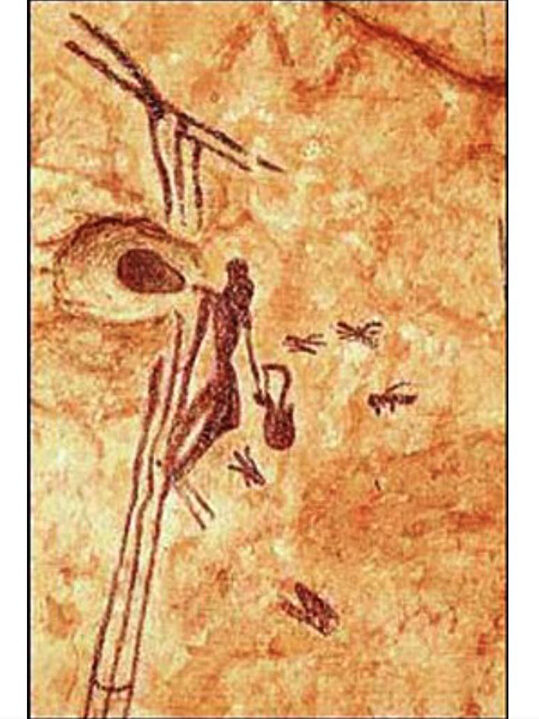Welcome back to this series where we explore bees and honey throughout history. This month, we travel back in time to ancient Maya.
The ancient Mayan civilization existed from approximately 2000 BCE until 1600 CE and was located in what is today’s Mexico and Central America.
The ancient Maya were intelligent people with a mind for calculations. As well as inventing the concept of ‘zero’ (wow!), they were able to study the stars and weather in order to create detailed and accurate calendars that enhanced their ability to farm effectively. They grew many foods, including:
- Maize – the material that was used to create humans
- Pumpkins
- Tomatoes
- Avocados
- Cocoa – the Maya were the first to grow this plant and turn it into a chocolatey drink
- Chilli peppers – this was mixed with cocoa, cornmeal and honey to create a very exclusive beverage only for the elite
And some farmers kept bees!
The speciality of these beekeepers was the stingless bee, which they called the Royal Lady Bee. This name suggests they may have realised the bees had a matriarchal society, and it demonstrates the respect Mayan society held for the natural world. Farmers, foragers and hunters of any plant or animal would always be careful not to take too much of any resource, and may have even left a gift in exchange, because they understood the value of living harmoniously with nature and with the spirit guardian of each species.
Apiculture techniques and the Mayan view on the divinity of bees are described in the Madrid Codex, a text written by the Maya. They wrote beautiful books made from tree bark paper and leopard skin covers. Tragically, most of these texts were destroyed when Spanish invaders conquered the land. Only three books survived.
One aspect of the Mayan beekeeping method I love is the care with which bees were handled. Mayan beekeepers were gentle with not only the colony but individual bees. They made great efforts to avoid the injury or death of even a single bee. Should one get soaked in water or honey, she was dried and returned to her hive. Should one be killed, she was wrapped in a leaf and given a proper burial. With beekeepers who showed such love and respect towards them, colonies could survive for decades.
Royal Lady Bees produce exceptionally sweet honey that they store in small wax spheres, rather than building honeycomb like western honey bees. This super sweet honey was celebrated by the ancient Maya for its taste and was used for medicinal, therapeutic and spiritual purposes, as well as for making delicious food and drink, such as honey mead.
Another difference between stingless bees and western honey bees is that stingless bees generate considerably less honey. The Royal Lady Bee liquid gold must have been a rare and valuable treasure indeed in ancient Maya. Because of its scarcity, beekeepers would participate in festivals in which flowers abounded, incense filled the air and pictures were painted using honey. These festivals were intended to summon abundance in the hives and bring about a bountiful harvest.
When the Spanish conquered the Maya, they did all they could to wipe out Mayan culture. They destroyed the buildings, burned the books and murdered the people. But they didn’t touch the Royal Lady Bees. The conquistadors were too impressed by the honey to eradicate the apiaries and their beekeepers.
There are groups working to preserve the Mayan beekeeping traditions to this day.
